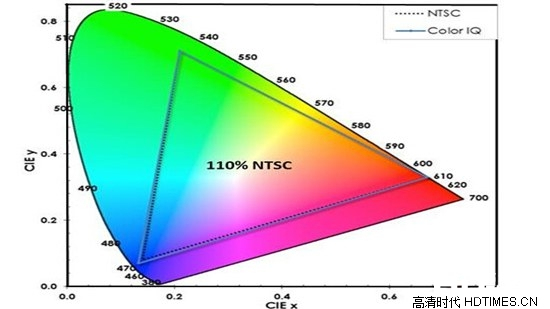- Welcome to our website!
- Service Hotline: +86760-88771358
Cause Analysis of LED Dead Light
We often encounter the situation that the LED is not lit. Packaging enterprises, application enterprises, and the units and individuals using it are all likely to encounter it. This is what people in the industry call the "dead light" phenomenon. There are two reasons:
First, the large leakage current of LED will cause the failure of PN junction, making the LED light off, which generally will not affect the operation of other LED lights;
Secondly, the internal connection lead of LED lamp is disconnected, which causes no current passing through the LED and leads to a dead lamp. This situation will affect the normal operation of other LED lamps. The reason is that the operating voltage of LED lamps is low (the operating voltage of red, yellow and orange LEDs is 1.8V-2.2V, and the operating voltage of blue, green and white LEDs is 2.8-3.2V). Generally, they are connected in series and parallel to adapt to different operating voltages. The more LED lamps in series, the greater the impact, As long as there is an open circuit in the internal wiring of one LED lamp, the whole string of LED lamps in the series circuit will not light up. It can be seen that this situation is much more serious than the first situation.

LED dead lights are the key to affect product quality and reliability. How to reduce and eliminate dead lights and improve product quality and reliability is the key problem that packaging and application enterprises need to solve. The following is an analysis of the causes of dead lights,
1. The static electricity will damage the LED chip, making the PN junction of the LED chip invalid, increasing the leakage current and turning it into a resistance
Static electricity is a kind of devil with great harm. There are countless electronic components damaged by static electricity all over the world, resulting in economic losses of tens of millions of dollars. Therefore, preventing static electricity from damaging electronic components is a very important work in the electronic industry. Enterprises that package and apply LED must not take it lightly. If any link goes wrong, it will cause damage to LED, and make LED performance worse or even invalid. We know that the static electricity of human body (ESD) can reach about 3000 volts, which is enough to break down and damage the LED chip. In the LED packaging production line, it is also important to see whether the grounding resistance of various equipment meets the requirements. Generally, the grounding resistance is required to be 4 ohms, and the grounding resistance of some fields with high requirements should even be ≤ 2 ohms.
These requirements are familiar to people in the electronic industry, and the key is whether the actual implementation is in place and whether there are records. According to the author, the anti-static measures of ordinary private enterprises are not in place, which is why most enterprises can not find the grounding resistance test records. Even if they do the grounding resistance test once a year, or once a few years, or check the grounding resistance when there is a problem, but they do not know that the grounding resistance test is a very important work, at least 4 times a year (once a quarter), and some places with high requirements, The grounding resistance shall be tested once a month.
The soil resistance will vary with seasons. There is more rain in spring and summer, and the wet soil grounding resistance is easy to reach. The dry soil moisture in autumn and winter is less, and the grounding resistance may exceed the specified value. The purpose of recording is to preserve the original data, so that it can be well documented in the future. Conform to ISO2000 quality management system. The grounding resistance can be tested by designing a table, which is required by the grounding resistance test packaging enterprises and LED application enterprises. As long as the names of various equipment are filled in the table, the grounding resistance of each equipment measured is recorded on file, and the tester can sign for archiving.
The static electricity of human body will also cause great damage to LED. The LED should wear anti-static clothing and be equipped with a static electricity ring. The static electricity ring should be well grounded. There is a kind of static electricity ring that does not need to be grounded. It is not recommended to use this type of product. If the staff violates the operating rules, they should receive corresponding warning education and also play the role of informing others. The amount of static electricity carried by the human body is related to the different fabrics and clothes people wear and their physical fitness. In autumn and winter, when we take off clothes at night, it is easy to see the discharge between clothes. The voltage of this static electricity discharge is 3000 volts.
While the ESD value of silicon carbide substrate chip is only 1100 volts, the ESD value of sapphire substrate chip is lower, only 500-600 volts. If we take a good chip or LED with our hands (without taking any protective measures), we can imagine the results. The chip or LED will be damaged to varying degrees. Sometimes a good device will be damaged inexplicably when it passes through our hands. This is the disaster caused by static electricity.
If the packaging enterprises do not strictly follow the grounding procedures, it will be the enterprises themselves that suffer losses, which will lead to a decline in the product qualification rate and reduce the economic benefits of the enterprises. Similarly, if the equipment and personnel of the LED enterprises are poorly grounded, it will also cause LED damage, and rework is inevitable. According to the requirements of the LED standard operation manual, the lead of LED should be no less than 3-5 mm from the gel for bending or welding. However, most application enterprises do not do this. They just directly weld a PCB (≤ 2 mm) apart, which will also cause damage or damage to the LED. Because too high welding temperature will affect the chip, which will deteriorate the chip characteristics, reduce the luminous efficiency, and even damage the LED, This phenomenon is not uncommon. Some small enterprises use manual welding, using a 40 watt ordinary soldering iron. The welding temperature cannot be controlled. The soldering iron temperature is above 300-400 ℃, and too high a welding temperature will also cause a dead light. The expansion coefficient of LED leads at high temperatures is several times higher than the expansion coefficient at about 150 ℃. The internal gold wire solder joints will be pulled apart due to excessive thermal expansion and cold contraction, causing a dead light phenomenon.
2. Cause Analysis of Dead Light Phenomenon Caused by Open Solder Joint of LED Lamp Internal Wiring
2.1 The direct cause of LED dead light is the incomplete production process of packaging enterprises and backward inspection methods of incoming materials
Generally, LED is encapsulated by a bracket array. The bracket array is made of copper or iron metal materials by precision die stamping. Due to the high cost of copper, the cost is naturally high. Influenced by fierce competition in the market, in order to reduce manufacturing costs, the market mostly uses cold rolled low-carbon steel to press LED bracket array. The iron bracket array should be silver plated. Silver plating has two functions, one is to prevent oxidation and rust, the other is to facilitate welding, The electroplating quality of the support row is very critical, which is related to the life of the LED. The treatment before electroplating should be carried out in strict accordance with the operating procedures. The processes of rust removal, oil removal, phosphating, etc. should be meticulous. The current should be controlled well during electroplating. The thickness of the silver coating should be controlled well. The coating is too thick, high cost, and too thin affects the quality.
Because the general LED packaging enterprises do not have the ability to inspect the electroplating quality of the support row, this gives some electroplating enterprises an opportunity to thin the silver coating of the electroplating support row and reduce the cost. The general packaging enterprises IQC lacks inspection means for the support row, and there is no instrument to detect the thickness and fastness of the support row coating, so it is easier to muddle through. The author has seen that some supports rust after being discharged in the warehouse for several months. Let alone use them, we can see how poor the quality of electroplating is. The products made with such supports will not last long. Not to mention 30000 to 50000 hours, 10000 hours will be a problem.
The reason is very simple: there is a period of southerly weather every year. In such weather, the humidity in the air is high, which is easy to cause poor electroplating of metal parts to embroider, making LED components invalid. Even if the encapsulated LED is too thin, the adhesion is not strong, and the solder joint is separated from the bracket, resulting in dead light. This is why the well used lamp doesn't light up. In fact, the internal solder joint is separated from the bracket.
2.2 In the process of packaging, each process must be carefully operated, and any link negligence is the cause of dead light
In the process of spot welding and crystal solidification, it is impossible to spot more or less silver glue (for single solder chip). More glue will return to the chip gold pad, causing short circuit, and the chip will not stick firmly without more glue. The same is true for the insulation glue of double solder joint chip. If there are too many spots, the insulation glue will return to the gold pad of the chip, resulting in faulty soldering during welding and dead light. There are few chips and they cannot be firmly glued, so the dispensing must be just right, neither more nor less.
The welding process is also critical. The four parameters of the gold wire ball welder, namely, pressure, time, temperature and power, should be properly matched. In addition to the fixed time, the other three parameters are adjustable. The pressure should be properly adjusted. A large pressure is easy to crush the chip, and a small pressure is easy to solder. In general, it is better to adjust the welding temperature at 280 ℃. Power adjustment refers to the adjustment of ultrasonic power. Too large or too small is not good, so it should be moderate. In a word, the adjustment of various parameters of the gold wire ball welder is qualified when the welded materials are tested ≥ 6g with a spring torque tester.
Each parameter of the gold wire ball welder shall be tested and corrected every year to ensure that the welding parameters are in the best state. In addition, the arc of the welding line is also required. The arc height of a single solder joint chip is 1.5-2 chip thicknesses, and the arc height of a double solder joint chip is 2-3 chip thicknesses. The arc height will also cause LED quality problems. Too low arc height is likely to cause the dead light phenomenon during welding, and too high arc height is poor in current impact resistance.
3. Methods for identifying dead light of faulty welding
Use a lighter to heat the LED lead to 200-300 ℃, remove the lighter, and connect the LED by pressing the positive and negative electrodes with a 3V buckle battery. If the LED light can be lit at this time, but the LED light changes from on to off as the lead temperature decreases, this proves that the LED light is faulty soldering. The reason why the heating can light up is that the principle of metal thermal expansion and cold contraction is used. When the LED leads are heated, they expand and extend and the internal solder joints are connected. At this time, the LED can light up normally when the power is connected. As the temperature drops, the LED leads shrink back to the normal temperature state, and the LED lights do not light up when the LED leads are disconnected from the internal solder joints. This method has been proven effective repeatedly.
Weld the two leads of the dead light of this kind of faulty soldering on a metal strip, soak it with a relatively thick sulfuric acid to dissolve the outer colloid of the LED, take out all the colloid after dissolution, and observe the welding condition of each welding point under a magnifying glass or a microscope to find out whether it is the problem of the first welding or the second welding, whether it is the parameter setting of the gold wire ball welder is wrong or other reasons, so as to improve the method and process and prevent the phenomenon of faulty soldering from happening again.
Users who use LED products will also encounter the phenomenon of dead lights. This is why LED products have been used for a period of time. There are two reasons for the dead lights. The open circuit dead lights are poor welding quality, or the quality of the bracket electroplating is bad. The increase of the leakage current of LED chips will also cause the LED lights not to light up. Now many LED products do not add anti-static protection in order to reduce cost, so it is easy to be damaged by induced static electricity. Thundering in rainy days is prone to high-voltage static electricity induced by power supply lines, as well as spike pulse superimposed by power supply lines, which will damage LED products to varying degrees.
In a word, there are many reasons for dead lights, which can not be listed one by one. Dead lights may occur in every link from packaging, application to use. How to improve the quality of LED products is a problem that packaging enterprises and application enterprises should attach great importance to and seriously study. From chip and bracket selection to LED packaging, the entire process flow should be operated according to the ISO2000 quality system. Only in this way can the quality of LED products be improved comprehensively, and can it achieve long life and high reliability. In the applied circuit design, selecting varistors and PPTC components to improve the protection circuit, increasing the number of parallel circuits, using constant current switching power supply, and adding temperature protection are all effective measures to improve the reliability of LED products. As long as the packaging and application enterprises operate in strict accordance with the ISO2000 quality system, the LED product quality will surely reach a new level.




 【Code scanning access】
【Code scanning access】